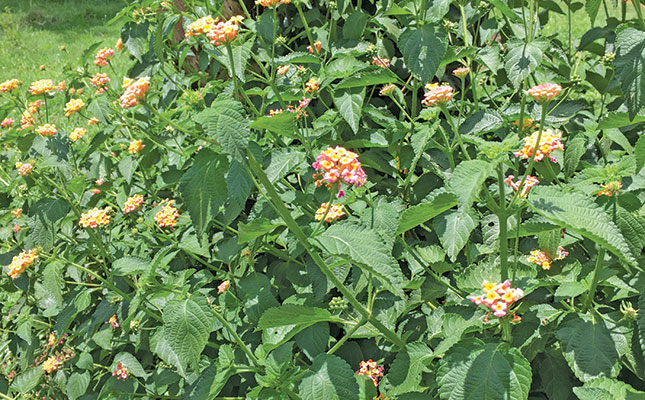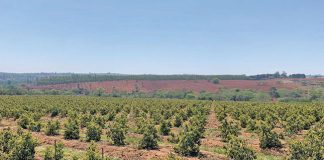
Photo: Dr Mac
Lantana (Lantana camara) is a flowering shrub in the Verbenaceae family. It is considered one of the most invasive weeds in the world, and is classified as a Category 1b invasive alien species in the South African National Environmental Management Biodiversity Act of 2004.
This weed is a problem in six of the country’s nine provinces, and landowners are legally obliged to control or eradicate it.
Lantana was originally imported from Central and South America as an ornamental plant because of its yellow-orange flowers.
Ripe berries are eaten by birds, which spread the seeds in their droppings. Sometimes they are also eaten by children; the green berries are toxic and can result in fatal liver failure.
Horses usually start to eat lantana when grazing is scarce and can become addicted to it, later seeking it out even when there is enough grazing. It is more commonly found along fences and under trees and grows rapidly, often smothering indigenous plants and grasses.
Poisoning is more often seen in cattle than horses, but the signs of chronic poisoning are similar.
Signs of poisoning
Signs of poisoning are related to chronic, long-term liver failure. The first sign is usually photosensitisation (sunburn), resulting in redness, pain and swelling of the skin, especially on white markings. Paints and Appaloosas can thus be very badly affected.
The membranes of the eyes and gums become jaundiced (yellow), which can result in a misdiagnosis of biliary fever. Constipation and impaction colic are also seen due to the effect the toxin has on the gall bladder and bile ducts.
Listlessness and sores on the lips, gums and tongue may follow. Urination and dehydration may increase due to kidney failure. Severe loss of condition, lack of appetite and bloody diarrhoea are seen in terminal cases.
Poisoning can take a few days to more than two weeks, depending on how much of the plant is consumed. Treatment is successful only in mild cases, and consists of liver support and fluids.
Usually, if the diagnosis is made from a post-mortem, it is worth checking your other animals for signs of poisoning and giving them liver support by adding vitamin B complex and vitamin B12 to their rations.
Prevention
In the case of lantana, prevention is better than cure. Biological control measures are expensive and may be ineffective as there are many hybrids that are also resistant to drought, frost and veld fires.
The best form of eradication is to chop the plant down and remove its roots. If this is not possible, the bush can be cut back in summer, when it grows rapidly.
The fresh stump should be painted with the weed killer Imazapyr. Follow this up by mixing 3% of glyphosate in water with 1,5% of triclopyr and diesel.
It is recommended that you check for regrowth every year in April/May when the plants are in flower and easy to see. Every single plant should be removed rigorously from horse paddocks all year round, as addicted horses will seek the plants out and may even go through fences to graze the plant.
Dr Mac is an academic, a practising equine veterinarian and a stud owner.










